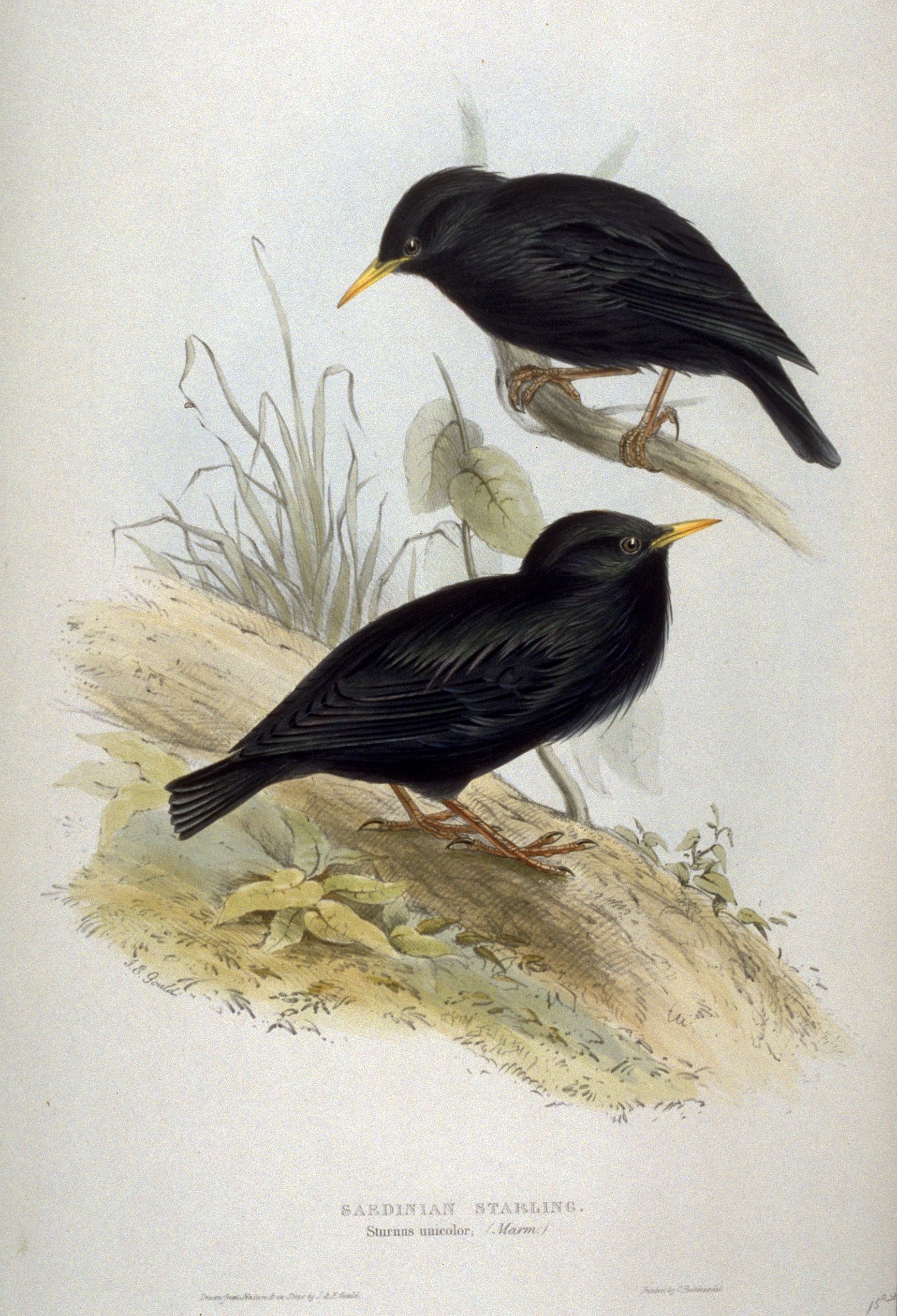- Spotless Starling
Taxobox
name = Spotless Starling

image_width= 200px
image_caption =Lithograph by John Gould
status = LC
status_system = iucn3.1
regnum =Animal ia
phylum =Chordata
classis =Aves
ordo =Passeriformes
familia =Sturnidae
genus = "Sturnus "
species = "S. unicolor"
binomial = "Sturnus unicolor"
binomial_authority = Temminck,1820 The Spotless Starling, "Sturnus unicolor", is a
passerine bird in thestarling family Sturnidae. It is closely related to the ubiquitousEuropean Starling , but has a much more restricted range. Thegenus "Sturnus " seems to be highlyparaphyletic and is likely to be split up soon (Zuccon "et al." 2006); this species, like its close relative (which is thetype species of "Sturnus"), would retain their present classification however.This starling is resident in the
Iberian peninsula , northwestAfrica ,Sicily ,Sardinia andCorsica . It does not migrate.Confusion with other species is only likely in winter, when migrant European Starlings may also be present. Adult male
European Blackbird s can be easily distinguished by more slender body shape, longer tail, and behavior (they hop instead of walking and do not probe for food with open bills). The adult Spotless Starling species has darker, oily-looking plumage, which is entirely spotless in spring and summer. Its legs are bright pink. Young birds are dull brown, and darker than young European Starlings.Like the European Starling, these starlings walk rather than hop, and have a strong direct flight, looking triangular-winged and short-tailed. This is a noisy bird, and a good mimic; its calls are similar to the commoner species, but are clearer and higher pitched.
The Spotless Starling is catholic in its choice of habitats, and can be found in any reasonable open environment from farmland and
olive groves to human habitation.Like their commoner relative, these birds are omnivores, taking invertebrates, scraps and berries. This is a gregarious species, forming sizeable flocks in winter, although not of the enormous size of European Starling.
This is a hole-nesting species like most starlings, breeding in tree holes, buildings and in cliff crevices. It typically lays four eggs.
References
*|year=2004|id=51910|title=Sturnus unicolor|downloaded=12 May 2006 Database entry includes justification for why this species is of least concern
*aut|Zuccon, Dario; Cibois, Anne; Pasquet, Eric & Ericson, Per G.P. (2006): Nuclear and mitochondrial sequence data reveal the major lineages of starlings, mynas and related taxa. "Molecular Phylogenetics and Evolution" 41(2): 333-344. doi|10.1016/j.ympev.2006.05.007 (HTML abstract)External links
* [http://www.ibercajalav.net/img/417_SpotlessStarlingSunicolor.pdf Ageing and sexing (PDF) by Javier Blasco-Zumeta]
Wikimedia Foundation. 2010.
